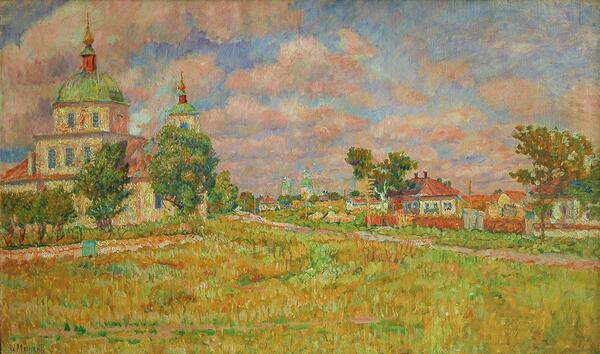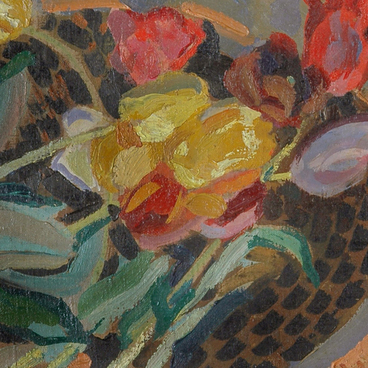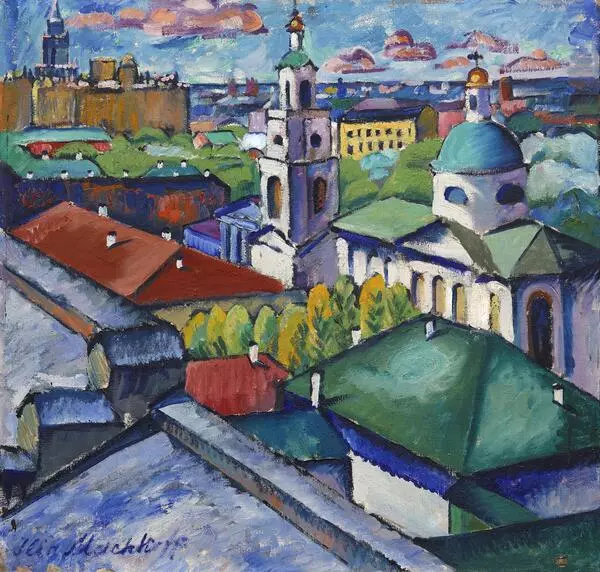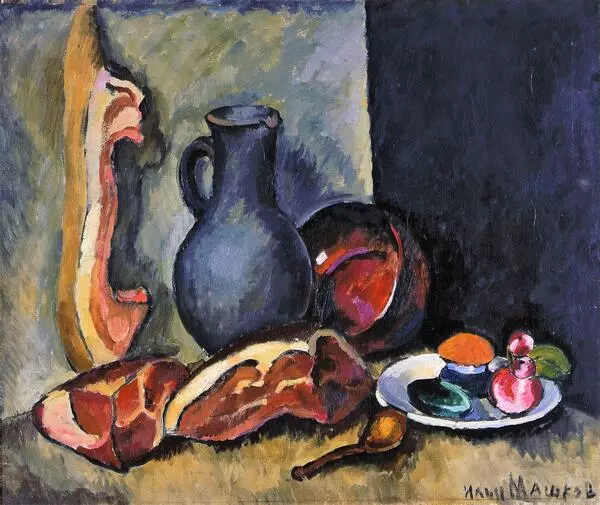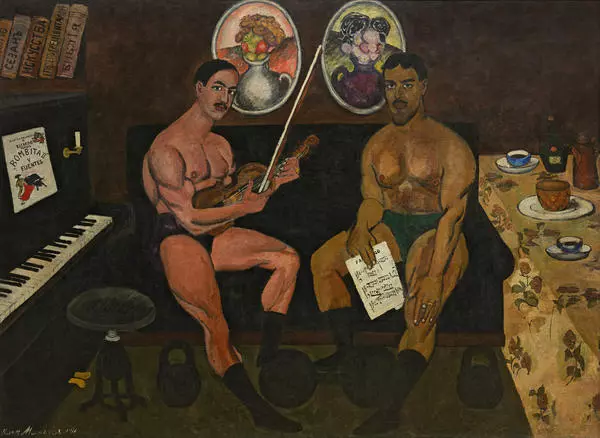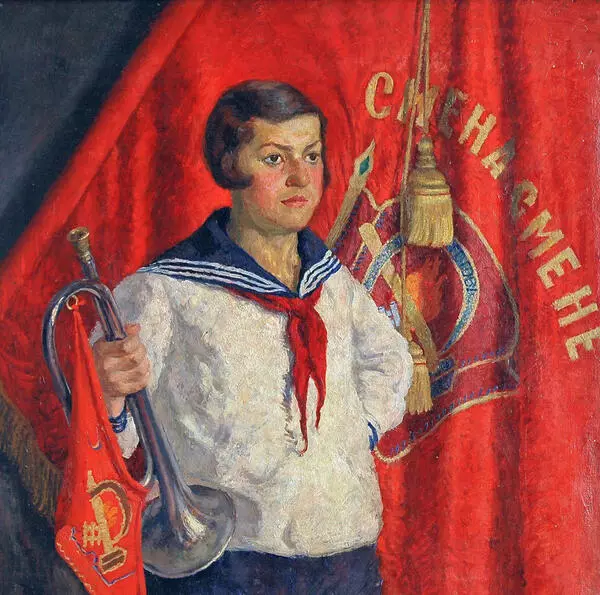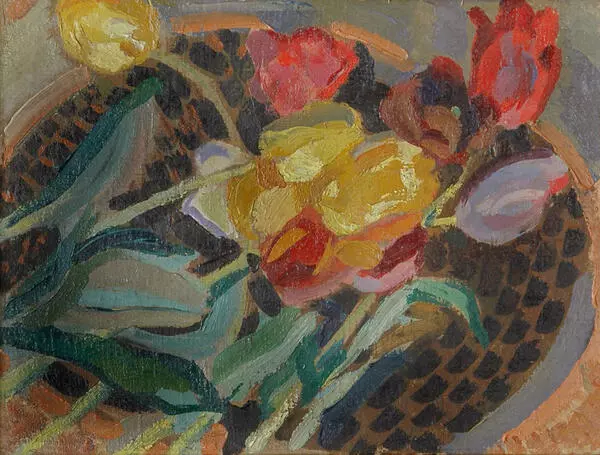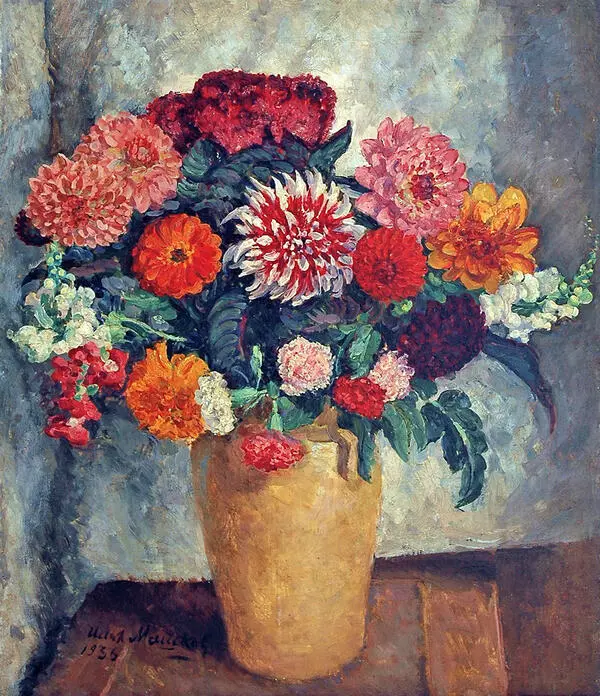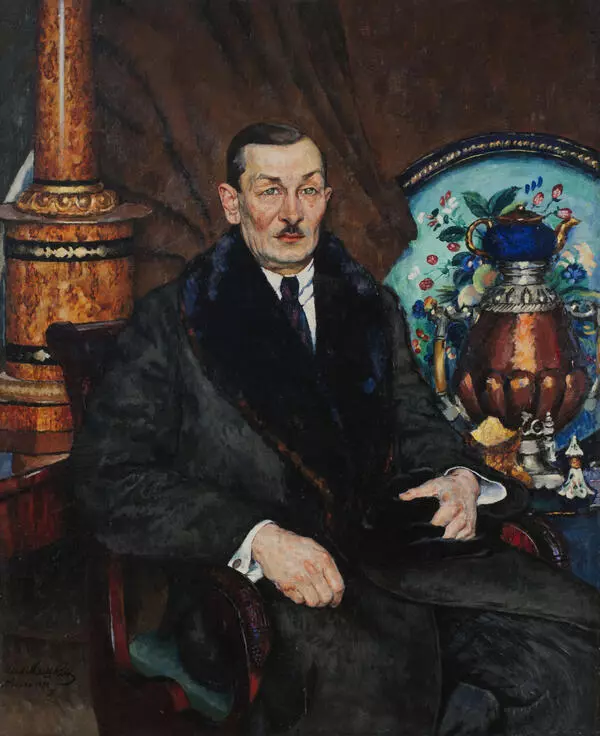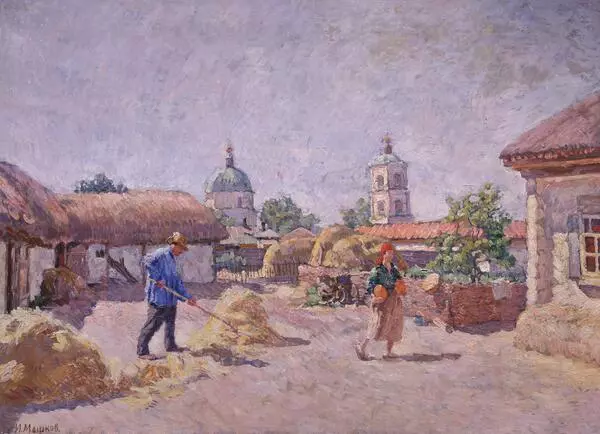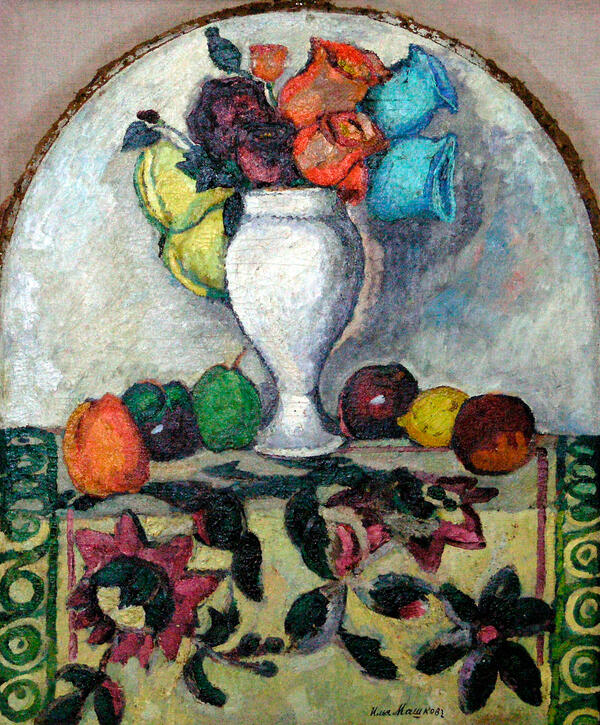This landscape is part of the so-called ‘Mikhailovskaya’ series of works by Ilya Mashkov. Almost all canvases of this period are devoted to the artist’s hometown, that is the cossack village of Mikhailovskaya. In the 1930s, Mashkov painted light, sunny and idyllic pictures far from the gloomy historical context of collectivization, dekulakization, famine and political repressions. The canvas “Village Mikhailovskaya” is painted with light, thin strokes in a light color palette. Gold and pink colors prevail in the painting’s coloring.
In the 1930s, Mashkov returned to Mikhailovskaya almost 30 years after his last visit. The former cossack village had by then been transformed into a hamlet and became part of the collective farm named after Kliment Voroshilov. Mashkov was struck by the devastation and poverty in the region. The artist wanted to contribute to the revival of his native region, and decided to build a ‘city of the future’ in Mikhailovskaya, an ideal socialist center of creative development.
‘All the roughness, savagery, and poverty of Mikhailovskaya’s inhabitants made me think hard about how I could help the collective farmers, my countrymen, not only culturally, but also economically, ’ he recalled.
In the former cossack village Mashkov created an art studio for young people, where he taught personally, and then, organized a house of socialism culture, where groups, clubs, several theaters and orchestras began to work.
“I taught all classes daily by myself. The club is still working. I keep in touch with it, manage them with my own funds, sent them some paints… With the help of public organizations I intend to continue the support and to lead the circle, ” wrote the artist in the autumn of 1930.
From 1930 to 1937, Mashkov lived for long periods in Mikhailovskaya and, practically abandoned painting. He was completely absorbed in organizational work. His project was supported by the authorities, but the locals did not accept it, which made the implementation very difficult.
The artist studied the economic and administrative aspects of the collective farm life. In his letters he spoke in detail about the planting acreage, tons of crops, number of employees, the amount of funding, the percentage of plan performing. Mashkov fought to keep the windmill, installing electrical equipment, build a MTS, and move the fruit and vegetable integrated plant to Mikhailovskaya.
In the 1930s, Mashkov returned to Mikhailovskaya almost 30 years after his last visit. The former cossack village had by then been transformed into a hamlet and became part of the collective farm named after Kliment Voroshilov. Mashkov was struck by the devastation and poverty in the region. The artist wanted to contribute to the revival of his native region, and decided to build a ‘city of the future’ in Mikhailovskaya, an ideal socialist center of creative development.
‘All the roughness, savagery, and poverty of Mikhailovskaya’s inhabitants made me think hard about how I could help the collective farmers, my countrymen, not only culturally, but also economically, ’ he recalled.
In the former cossack village Mashkov created an art studio for young people, where he taught personally, and then, organized a house of socialism culture, where groups, clubs, several theaters and orchestras began to work.
“I taught all classes daily by myself. The club is still working. I keep in touch with it, manage them with my own funds, sent them some paints… With the help of public organizations I intend to continue the support and to lead the circle, ” wrote the artist in the autumn of 1930.
From 1930 to 1937, Mashkov lived for long periods in Mikhailovskaya and, practically abandoned painting. He was completely absorbed in organizational work. His project was supported by the authorities, but the locals did not accept it, which made the implementation very difficult.
The artist studied the economic and administrative aspects of the collective farm life. In his letters he spoke in detail about the planting acreage, tons of crops, number of employees, the amount of funding, the percentage of plan performing. Mashkov fought to keep the windmill, installing electrical equipment, build a MTS, and move the fruit and vegetable integrated plant to Mikhailovskaya.

